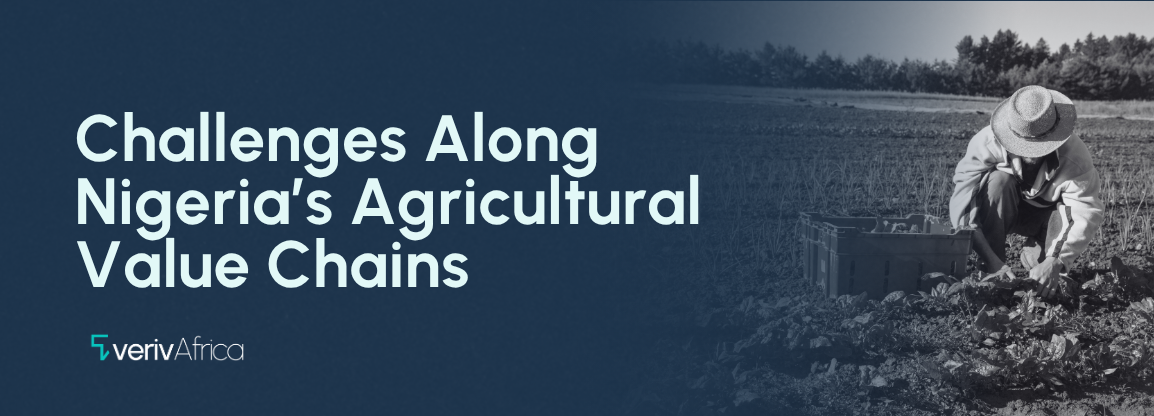Nigeria’s Gross Domestic Product (GDP) grew by 2.98% year-on-year in the first quarter of 2024, surpassing the 2.31% recorded in the first quarter of 2023 but lower than the 3.46% growth in the fourth quarter of 2023. The services sector primarily drove this growth, contributing 58.04% to the overall GDP. Nigeria’s poor economic productivity—relative to size and GDP—is also worsened by the fact that it reported a food inflation rate of 40.53% in April 2024, 15.92% points higher than the rate recorded in April 2023 (24.61%). The headline inflation rate increased to 33.69% relative to the March 2024 inflation rate, which was 33.20%.
Amidst these challenges, Nigeria's population faces significant poverty levels, with 63% of its population, equivalent to 133 million people, classified as multidimensionally poor as of 2022. Rural areas have a higher poverty rate of 72%, compared to 42% in urban areas. This means that Nigeria needs new practical ideas, especially with tried and tested economic ideas that have enabled countries to kickstart their development, and these will require stronger political will. The ideas must also be practical, improving GDP per capita and the common well-being and human development of a developing nation with Nigeria’s characteristics.
Trade
One area where the Nigerian Government can stimulate economic growth is in manufacturing, focusing on sectors where it can competitively engage. However, Nigeria's trade figures reveal a country struggling to achieve self-sufficiency.
In the fourth quarter of 2023, Nigeria's total trade amounted to ₦26,801.95 billion, with exports totalling ₦12,693.62 billion and imports ₦14,108.33 billion. For 2023, total trade reached ₦71,880.01 billion, with imports at ₦35,917.62 billion and exports at ₦35,962.39 billion. Nigeria's top five export destinations in Q4 2023 were the Netherlands, India, Spain, Canada, and France, collectively accounting for 45.29% of total exports.
Nigeria's challenges are compounded by a lack of political will to address systemic issues, resulting in its status as "Africa’s most disappointing" economy, given its size, natural resources, climate, coastline, and population.
Despite rhetoric on economic diversification away from crude oil, as of Q4 2023, petroleum oils and natural gas exports still constitute nearly 90% of Nigeria's export earnings. Nigeria faces a bleak economic future coupled with declining production levels compared to 40 years ago.
Manufacturing in Nigeria
The most practical form of development that aligns with Nigeria’s characteristics would be the manufacturing model, which has been adopted by many nations, particularly in East Asia, as a model from developing to developed. Nigeria's manufacturing sector experienced nominal GDP growth of 8.21% year-on-year in Q1 2024, a decrease from 17.85% in the same period of 2023 and 38.06% in Q4 2023. Manufacturing also contributed 14.79% to nominal GDP in Q1 2024, down from 15.70% in Q1 2023 and 16.04% in Q4 2023, highlighting significant challenges for Nigeria to establish itself as a manufacturing hub.
The Textile Model
East Asia offers a compelling model for any African nation aspiring to drive economic growth. Countries like China, Bangladesh, Vietnam, and India have leveraged textile manufacturing to propel export-led economic development, transitioning subsequently to developed service economies.
Despite facing challenges such as natural gas production, pipelining, electricity development, and trade infrastructure, Nigeria can capitalise on its potential for raw material production and manufacturing skills, particularly in textiles. Textiles remain a cornerstone export for major East Asian economies.
In 2022, global textile trade amounted to $941 billion, with China leading exports at $303 billion, followed by Bangladesh at $57 billion. Nigeria, in contrast, recorded only $74.9 million in textile exports and $4.3 billion in imports during the same period.
The Bangladesh Model
Bangladesh provides a compelling case study for Nigeria. Its textile industry underwent a significant transformation, transitioning from a state-dominated to a privatised model post-1974. Policy shifts towards export-oriented industrialisation, including trade liberalisation and incentives for export earnings, were pivotal in enhancing Bangladesh's textile competitiveness.
In response to the aftermath of the 1974 famine, Bangladesh's textile industry underwent significant transformations as its public economic policy shifted towards a privatised model. This transition aimed to enhance competitiveness, attract foreign investment, and foster technological advancements. Consequently, Bangladesh reduced the public sector's involvement in the textile industry while encouraging private sector participation. It evolved from a state-dominated industrial model to one led by private sector growth.
Bangladesh established a Multi-Fiber Arrangement (MFA) in 1974 to regulate textile and garment trade globally, particularly between developed and developing countries. This was done through quotas and boundaries on imports to prevent market oversaturation and maintain stability. Bangladesh, a low labour-cost economy, benefited from these quotas, allowing it to export textiles to the West without facing significant competition. Textiles contribute over 13% to Bangladesh's GDP today, with substantial export earnings and a robust domestic industry supporting global demand for garments and fabrics.
Additionally, the COVID-19 crisis accelerated e-commerce sales for Bangladesh's textile industry between 2020 and 2021.
The country's ready-made garment (RMG) exports grew by 12.55% to $31.46 billion (out of $38.76 billion in total exports) as demand in major markets in Europe and North America began to recover from the COVID-19 pandemic.
Where Nigeria Is Today: Order 003 and Tax levy
On March 28, 2024, the Nigerian Government indicated its commitment to revive its Cotton, Textile, and Garment (CTG) sector. Ambassador Nura Rimi, the Permanent Secretary of the Ministry of Industry, Trade, and Investment, revealed the Federal Government ‘initiated a lot of reforms geared towards resuscitating the Cotton, Textile and Garment (CTG)Sector, particularly in policy development and implementation.’
Nigeria’s Trade Ministry also noted that textiles used to be the liveliest sector of Nigeria’s economy, employing at least 450,000 Nigerians. They expressed concern with the sector’s slide to about 20,000 jobs with less than 20 mills (from 170 mills at its peak).
The Ministry revealed that the Nigerian government has moved towards reviving Nigeria’s textile sector over the years. Some of the initiatives include a ₦100 billion loan facility through the Bank of Industry (BoI) to retool, upgrade, and purchase equipment, which benefited 35 textile industries—10 garment firms, ten ginneries, and other companies that provide critical services to the sector throughout the country.
Others include reclassifying petrol prices and supply to the CTG sector to cut production costs from 7.62 dollars Mscf (thousands of standard cubic feet) to 3.36 dollars Mscf.
The Federal Government also actively issued Import Duty Exemption Certificates (IDECs) to duty-free machinery and spare parts importers, including the Federal Government’s Executive Order 003, which aims to boost local patronage and increase market access in the sector. This would be accompanied by the textile adjustment tax levy, with a 30 percent levy being remitted to the BoI for sector use through the CTG Fund 2.
FG and Industry Mismatch
Despite government initiatives to revive Nigeria's Cotton, Textile, and Garment (CTG) sector, challenges persist. Issues such as inadequate infrastructure, energy supply, unpredictable fiscal policies, reliance on imports, and policy implementation gaps hinder sectoral recovery and growth.
Efforts such as Executive Order 003, aimed at promoting local patronage, and the proposed textile adjustment tax levy are steps in the right direction. However, non-compliance and inconsistent enforcement remain vital barriers. Mr Ilyasu Saleh, Chairman of the Textile, Garments, and Leather Sectoral Group at the Manufacturing Association of Nigeria (MAN), revealed that numerous fiscal obstacles have hindered the industry’s recovery despite FG’s loans to the sector.
Cotton Production
Cotton in Nigeria is usually grown in states concentrated around the Savannah belts of the Northern Nigeria cotton zone, which comprises Kaduna, Kano, Katsina, Jigawa, Sokoto, Kebbi, and Zamfara States. The North-West zone provides 60 to 65% of the country's cotton.
Nigeria's cotton industry faces challenges ranging from insufficient seed supply and inadequate financing to poor infrastructure and policy inconsistencies. The Northern states dominate cotton production, particularly in the savannah belts, but struggle with low yields and market access.
Nigeria’s issues with fuel refining also spill over to sectors in which it has the comparative advantage to compete favourably but fails, as Nigeria's cotton production industry is struggling and facing extinction due to various challenges. Factors contributing to this decline include a shrinking local market, insufficient seeds available to farmers, and the shift of many cotton farmers to other crops. Nigeria’s cotton production has fallen significantly over the years, with low-quality inputs, inadequate financing, and the collapse of the textile industry being major reasons.
Cotton production in Nigeria is currently witnessing low yields compared to the international average. Problems identified by Nigerian farmers include insufficient funding, poor/unstable pricing, high input costs, pests and diseases, and poor linkage with off-takers. Nigerian cotton farmers have also revealed that the low price of cotton does not encourage most farmers to venture into cotton production.
Nigeria's journey towards economic diversification requires steadfast commitment and effective policy implementation across all sectors. Despite their potential contributions to exports, the neglect of industries like cotton and textile production underscores broader governance issues affecting Nigeria's economic trajectory.
One persistent theme in cotton and textile production in Nigeria is adequate government support through funding and loans but consistently poor implementation of the basics required to be competitive to East Asian standards ( seeds, cotton yields, energy, electricity, and transport infrastructure). This has snowballed into an industry that can barely keep up with demand ( imports of over $4 billion annually).
However, as with all things Nigerian, import demand is a necessity. The Nigerian government’s near obsession with hydrocarbon exports has blindsided an industry that could theoretically contribute more to Nigeria’s exports than Crude Oil.
Nation-building requires constant vigilance in all sectors of the economy, not one. Nigeria’s ignorance about the benefits of participating in cotton could also be traced to our poor record in refining our most precious natural resource. The lack of political will to fix what we depend on affects everything else, including textiles.
References
BusinessDay Nigeria. (2023). Shrinking market discourages cotton production by Nigerian farmers. Retrieved from https://businessday.ng/agriculture/article/shrinking-market-discourages-cotton-production-by-nigerian-farmers/
IndexMundi. (2023). Nigeria cotton yield by year. Retrieved from https://www.indexmundi.com/agriculture/?country=ng&commodity=cotton&graph=yield
IOSR Journals. (2023). An overview of the textile industry in Bangladesh. Retrieved from https://www.iosrjournals.org/iosr-jhss/papers/Vol.28-Issue6/Ser-6/I2806065355.pdf
Mordor Intelligence. (2023). Bangladesh textile manufacturing industry size report. Retrieved from https://www.mordorintelligence.com/industry-reports/bangladesh-textile-manufacturing-industry-study-market
Nigerian Statistical Agency. (2024). National gross domestic product Q1 2024. Retrieved from https://nigerianstat.gov.ng/elibrary/read/1241506
OEC World. (2023). OEC World Textile Report Retrieved from https://oec.world/en/profile/hs/textiles










